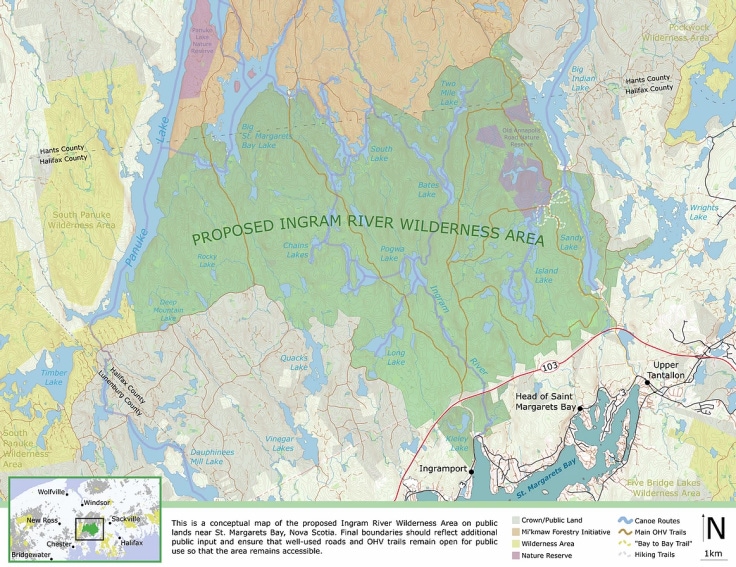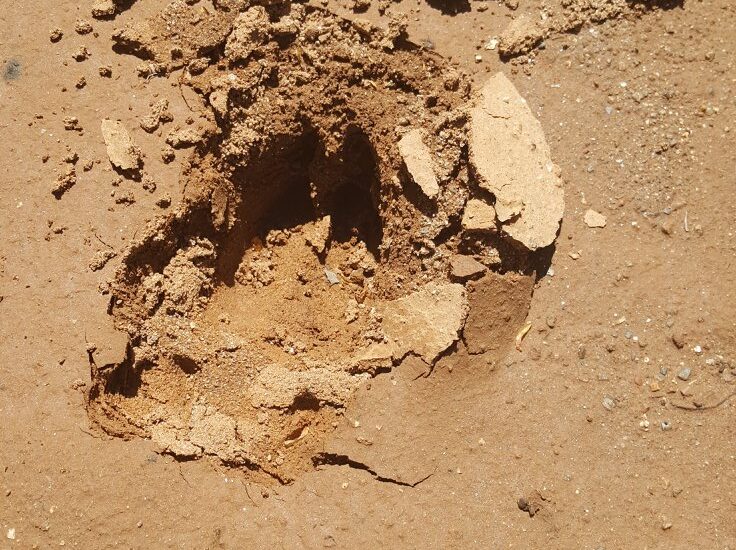KJIPUKTUK (Halifax) – Designating the Ingram River Wilderness Area near St. Margaret’s Bay will protect some of the most pristine publicly owned forests and waterways from logging and industrial activities. The 15,000 hectares are part of lands the province acquired when Bowater ran into financial difficulties in 2011.
I am familiar with the stunningly beautiful area. I am a bit of a (very bad) birder, and I like to go for walks there, binoculars in hand. And I am not the only one. People from the area as well as residents of Halifax, which is only a half hour drive away, use the area for hiking, fishing, camping and hunting.

“The area houses some lovely old stands that are among the oldest in the province. They’re beautiful mixed Acadian forests, with all of the attributes that we associate with a forest that is native to Nova Scotia. Areas that contain large oaks and maples Very much unlike the plantation-like spruce and fir dominated forest that comes out in response to clear cutting,” Helga Guderley, a member of the St. Margaret’s Bay Stewardship Association (SMBSA) tells me.
Guderley mentions that some of the trees in the area, well over 400 years old, are among the very oldest in the province. The area also contains a rare stand of eastern hemlock that has probably never been harvested with many trees over 200 years old.
After pressure by the SMBSA, former Minister Iain Rankin agreed to a temporary moratorium on harvesting while the Departments of Environment and Lands and Forestry are conducting a biodiversity assessment. But concerns about further damage will continue until the land is designated a wilderness area, says Guderley.
“Not that many years ago, there was an absolutely massive amount of land that was listed for clearcutting, and we protested quite a bit and made a lot of noise,” Guderley says. “By making this a wilderness area, a lot of the current usage would still be allowed, but it would be protected from future harvesting, and industrial uses, quarries and things like that.”
“Connectivity between green spaces is very important. So having this area be a green space, which is not cut down willy nilly, that’s not turned into dumps that’s not turned into an industrial zone is really important for wildlife,” Guderley says.

The designation of the IRWA will bring the area closer to the recommendations of the Lahey Report. Currently, the St. Margaret’s Bay District has only an 8 percent protection rate, while the Lahey Report calls for closer to 30 percent.
The wilderness designation process has reached the stage where an expression of broad public support for the designation may well be what is needed to convince politicians that the area warrants protection from further logging and industrial uses.
Recently the province posted an online survey to find out more about current uses of the lands. It’s important that people fill out the questionnaire to send a message that the land is worth protecting, Guderley believes.
“This survey is part of the biodiversity assessment. I think a strong community response will show that the community values this area for its biodiversity and for its natural characteristics, and for access to wilderness that we all need. So I see it as a persuasive tool,” Guderley says.
You can find the survey here. The survey includes an ‘other comments’ section where you can express your support for the wilderness designation.
Photos used for this article are from the Protect the Ingram River Wilderness Area website and Facebook page.
With a special thanks to our generous donors who make publication of the Nova Scotia Advocate possible.
Subscribe to the Nova Scotia Advocate weekly digest and never miss an article again. It’s free!



